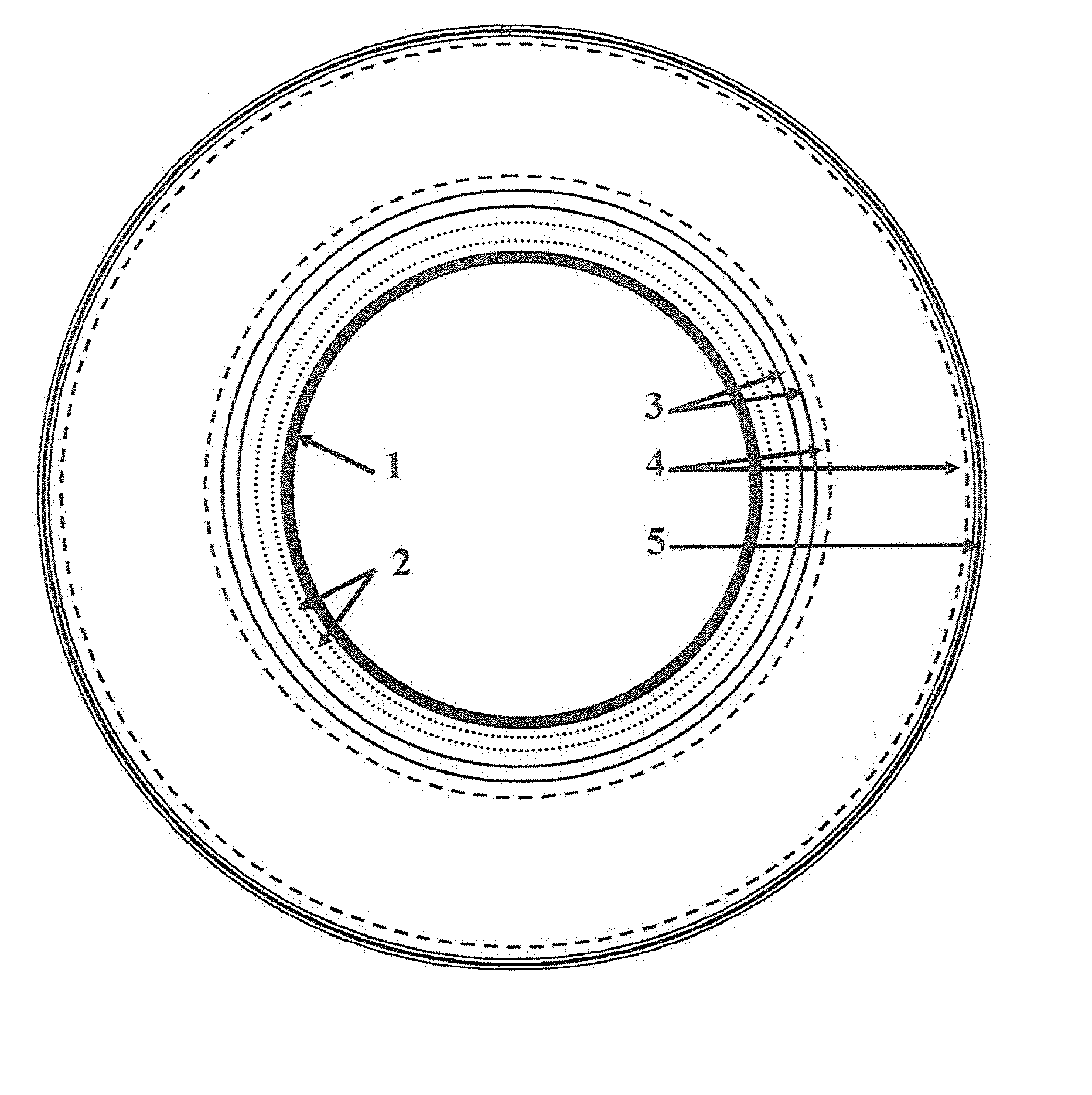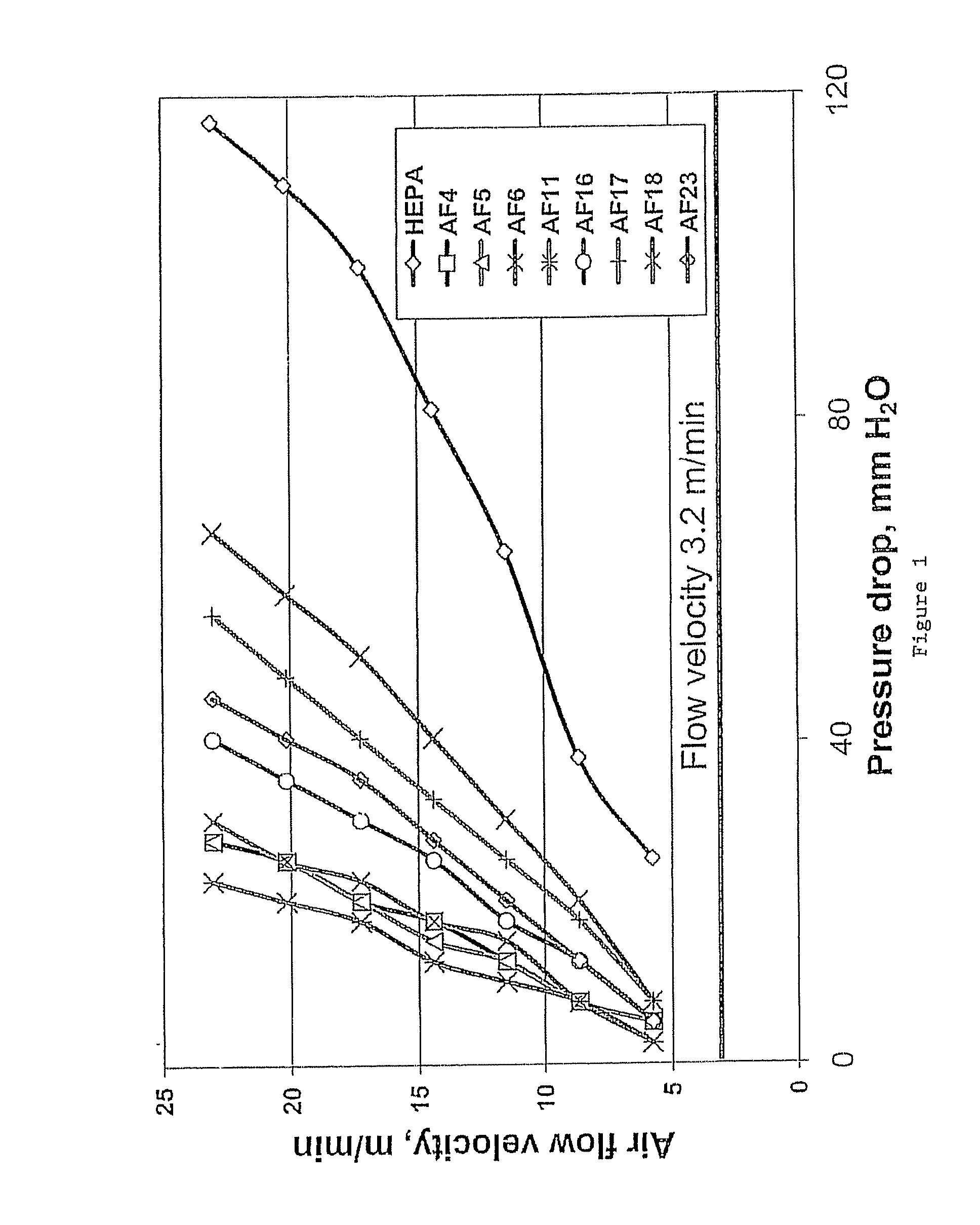Drinking water filtration device
- Summary
- Abstract
- Description
- Claims
- Application Information
AI Technical Summary
Benefits of technology
Problems solved by technology
Method used
Image
Examples
example 1
[0120] The object of the experiments outlined below was to develop a nano alumina media having a pressure drop substantially equivalent to HEPA media and a filtration efficiency substantially higher than HEPA. It was also an object of the experiments to correlate the nano alumina filter media's water adsorption performance with that of a known HEPA filter media (hereinafter, “the Donaldson HEPA filter”) to allow optimization of air filtration using water adsorption data.
[0121] Twenty four slurries of nano alumina on microglass mixtures were produced by reacting 5 μm diameter alumina powder (Valimet Corp. #H-5) in water at 100° C. in the presence of mulched borosilicate glass fiber wool of random lengths (Lauscha). Non-woven fiber media containing nano alumina were formed on a 1×1 ft sheet mold and were strengthened with 17-23% bi-component fibers (Invista T104, 20 μm diameter, ½″ length) that served as binder. Rhoplex binder was also added, about 2% by weight in liquid form. The sh...
examples 2-10
[0134] In Examples 2-10, the nano alumina filter media labeled AF3, AF6, AF11, and AF16 were used to further characterize the inventive nano alumina filter media as compared to the Donaldson HEPA filter. As set forth in Table 1, AF3 was comprised of 1.5 μm microglass fibers, AF6 and AF11 were comprised of 2.5 μm microglass fibers, and AF16 was comprised of a combination of 1.5 and 2.5 μm microglass fibers.
example 2
Initial DOP and NaCl Initial Particle Penetration
[0135] Filters AF3 (average pore size 16 μm), AF6 (average pore size 38 μm), AF11 (average pore size 37 μm), and AF16 (average pore size 28 μm), manufactured in Example 1, and the HEPA filter, were sent to Nelson Laboratories in Salt Lake City, Utah, for DOP and neutralized monodisperse NaCl aerosol testing. The challenge concentration was 1.5·106 particles / cm3 at 32 L / min through 100 cm2 filters. The aerosols had a median particle size of 0.3 μm which were considered to be in the most penetrating size range. The test samples were prepared in the form of 10×10 cm squares or about 4-5″ diameter discs. Three ply or three-layer flat sheets were tightened into the test device and challenged with an air stream at 32 L / min. The data are shown in Table 2.
TABLE 2Initial Penetration of DOP and NaClInitial airflowresistanceParticleSample# pliesDOP / NaCl(mm H2O)penetration, %HEPA1DOP32.80.02NaCl32.80.025AF163DOP29.10.513NaCl32.10.323AF64DOP23....
PUM
| Property | Measurement | Unit |
|---|---|---|
| Fraction | aaaaa | aaaaa |
| Nanoscale particle size | aaaaa | aaaaa |
| Volume | aaaaa | aaaaa |
Abstract
Description
Claims
Application Information
 Login to View More
Login to View More - R&D
- Intellectual Property
- Life Sciences
- Materials
- Tech Scout
- Unparalleled Data Quality
- Higher Quality Content
- 60% Fewer Hallucinations
Browse by: Latest US Patents, China's latest patents, Technical Efficacy Thesaurus, Application Domain, Technology Topic, Popular Technical Reports.
© 2025 PatSnap. All rights reserved.Legal|Privacy policy|Modern Slavery Act Transparency Statement|Sitemap|About US| Contact US: help@patsnap.com



